SEARCH






|
|
|
|


Yan Zhang's talent and skills are overwhelming. For sure he is an achieved landscape photographer. He has been tirelessly exploring the scenes of nature near and far and succeeded to capture those magical moments and transform them into eternal art. His work is focusing on grand landscapes of oceans, sky and mountains. His ultimate goal is to capture the true beauty of nature around us.
Yan also is a most appreciated member of the 1x Editorial team contributing regularly to the 1x Magazine with fine articles. I'm proud to present you this interview revealing his strong and charming personality behind his amazing photographs.
Can you briefly tell us about yourself, your hobbies and other jobs, Yan?
I grew up in China and had my tertiary education in computer science from Wuhan University. I came to Australia in 1990 to do my PhD study. After I completed my PhD program, I worked in several different Australian universities. Now I am an Artificial Intelligence professor in Western Sydney University, Australia.
I indulged a growing passion in outdoor activities from a young age. Since I started my landscape photography, I found that I was able to combine my photography and outdoor activities perfectly. I live in a place which is quite close to the Blue Mountains, this gives me good opportunities to hike and to take pictures in the Blue Mountains areas quite often.
From 2011 to 2013, I had several photography trips to New Zealand, and was greatly inspired by New Zealand’s high mountains. In January 2014, I participated in a mountaineering training in Mount Cook, New Zealand. Since then, mountaineering has become my serious hobby. I am particularly interested in the Southern Alps of New Zealand. Now each year, I go to climb in the Southern Alps two or three times.
How has your history and life experiences affected your photography?
My mother’s father was a painter of animals and flowers in China. He was also a Master of Chinese Hunan embroidery (Xiang Xiu) – the silk embroidery tradition, which emerged more than 2300 years ago, emphasizes the contrast between shadow and light, creating a 3D effect. Over the years, my mother’s family has had quite a few artists such as musicians and painters. From this aspect, I might inherit a bit artistic intuition from my mother’s family.
On the other hand, my passion for nature and outdoor activities certainly influences my photography journey. The beauty of our nature always motivates me to take my camera with me when I go to hike. I am particularly interested in capturing some aesthetic, surreal and moody nature scenes, no matter whether I am in the mountains or along a wild ocean shore. At the same time, my mountain adventures also give me opportunities to be able to capture some unusual landscapes in my camera.
Which are your most important experiences that have influenced your art?
Besides my pure passion to nature and the wilderness, I think there are two important experiences greatly influencing my photography. Firstly, I am greatly beneficial from my educations gained from China and Australia, because they provided me opportunities to absorb some essence from both eastern and western cultures, including the different aesthetic perspectives to our nature world. Such mixed culture backgrounds have given me advantages to develop my personal photography style.
Historically, Chinese landscape paintings mainly represent the overall outline of the surrounding objects, focus on the mood, atmosphere, and grandness of the environment, but pay less attentions to the details of the object structures, light and colours effects. On the other hand, from a western aesthetic viewpoint, like traditional oil paintings for example, techniques for capturing natural light and colours and their effects on objects were greatly emphasized and studied. Today, we still can see some differences reflected from such diverse culture backgrounds from the landscape photography works produced by Chinese photographers and the western photographers, although such differences are gradually fading away now. Personally, I believe that both aesthetic concepts contain allured artistic elements, and using them wisely would be an advantage for our photography.
Secondly, as a computer scientist, I was trained to observe and study things not only on overall principles but also to technical details, which really helps me to undertake effective photography activities in the field having an overall observation to the surroundings when coming to a photography field, always paying special attentions to subtle details, and applying precise up-to-date photography technologies to achieve the best outcomes. I believe that for modern landscape photography, having a good scientific attainment is quite important.
What first attracted you to photography?
My passion for nature, as well as some inherited artistic instinct probably sparked my interest in landscape photography. When I was an undergraduate student, I started to travel alone, especially to some mountain areas in China. Although I did not have a camera at that time, I always enjoyed to being in a wild environment and felt myself so close to nature.
Describe your overall photographic vision.
This is an interesting question. I think that every photographer, during his/her practice and exploration in the world of photography, will eventually develop a personal style and vision. For myself, most of my photographs tried to reflect a kind of surreal mood, such as ethereal and transition between day and night, because when I am doing my photography in the field, I am always intrigued by such feelings and atmosphere, and want to express them in my photos. Now I am doing more mountain photography in New Zealand. I would describe my ultimate goal for this work is to capture the various “on-the-edge” moments in these beautiful mountains.
What is more important to you, the mood/story behind your images or the technical perfection?
For me, there are three primary criteria for landscape photography: technical precision, essential authenticity, and inspirational creativity. Under such criteria, I think technical perfection and authenticity are two basic requirements. However, only achieving these two does not guarantee to gain a great landscape photograph. Creativity is the most important factor. The mood, story, and an appealing composition are all critical components contributing to the creativity in a landscape photograph.
What generally is your relationship to your subject matter beyond being an observer?
Do you prepare carefully the locations where you are intending to photograph?
Having a positive engagement with the environment is one of my photography principles – such engagement comes with a unique personal vision from my images that are able to represent my emotional connections to nature. The following image, for example, shows the moonrise moment over Tasman Glacier, where the foreground rocks provide a clear leading line towards the focal point of the scene, from that the audience may share my mountain view at that moment.
I always spend considerable time to discover an appealing composition in the field where I intend to photograph. For a place I visit for the first time, whenever it is possible, I usually come to the location long before I start to photograph so that I have sufficient time to explore around. Generally, I think searching for a good location is one of the biggest challenges in landscape photography.
What gear do you use (camera, lenses, bag)?
I mainly use Nikon DSLR cameras and lenses. I have Nikon D810 and D800 two camera bodies, and three Nikon lenses 14-24mm f/2.8, 24-70mm f/2.8 and 70-200mm f/2.8. I also have one Sigma 150-600mm f/5-6.3 telephoto lens, which I use sometimes for shooting mountains from the valley. My tripod system is based on Benro C2980T together with ball-head RRS BH-55.
I do not have a specific camera bag. As I do hiking and backpacking so often, I normally put all my gear into a 38L daypack if I do a day hike, or into a 75L backpack if I do multiple days backpacking or climbing.
What software do you use to process your images?
I use Photoshop CC (2017), plus some Photoshop plug-in applications including Google Nik Collections and Tony Kuyper Luminosity Mask package.
Can you tell us something more about your workflow?
To be honest, my post-processing workflow is pretty simple. To start my process, I first open a raw file in Camera Raw (CC), do some minimal and overall adjustments on Exposure, Highlights, Contrasts, Shadows, Whites and Blacks to recover some details. If necessary I also slightly adjust white balance through Temperature and Tint, but not so often. I generally like to remain the original colour tonality if that is not too far from what I feel in the shooting field.
Then I open the image in Photoshop CC (2017), where my main processing starts. The most important part I perform here is to do local adjustment on different components of the image, by doing dodge and burn on a layer with “Soft Light” mode and filling with 50% gray. Afterwards, I may also use Tony Kuyper Luminosity Mask to do further local adjustments on specific tones across the entire image.
What is your most important advice to a beginner in Landscape Photography and how do you get started?
I think as a photographer, the most important thing is to establish his/her personal vision in photography, and be confident and persistent with such vision in practice. Nowadays, I have seen many photographers are keen to follow the trend and even to specifically mimic those popular pictures from social media in order to get good attentions. But like other forms of art, photography is a way of self-expression, without a personal vision, our works would be feeling-less, duplicates of existing photos, or simply tourists snapshots.
Basically, I am self-taught in photography. I started to take landscape photographs from places near my home. In about two years time, I extensively explored many spots by myself in my university campus, nearby lakes and creeks, Sydney coast and Blue Mountains. I found such experience was particularly important for me to develop my independent photography ideas.
As part of training for developing personal photography concepts and philosophy, I think that learning from the Masters is an effective way for getting great inspirations. In 2011, I participated in Australian award-winning photographer Kah Kit Yoong’s New Zealand photography workshop, such excellent experience eventually reshaped my photography journey afterwards.
Who are your favourite photographers and more importantly, how has your appreciation of their work affected how you approach your own photography?
In my photography journey, two photographers and their works have significantly inspired me: one is Australian wilderness photographer Peter Dombrovskis and the other is American mountaineer and photographer Galen Rowell. Peter Dombrovskis spent most of his life to explore Tasmania wilderness and brought those remote and inaccessible landscapes into the public realm through his photographs. Galen Rowell, on the other hand, was a legendary mountaineer and pioneer adventure photographer.
I was inspired not only by their outstanding photography skills and works, but also their strong bound between their photography practice and natural conservations. Since 2014, I started mountaineering activities. For me, the landscape photography is beyond an art, it is a way of exploring the world and has an embedded connection to humanity.

“Rock Island Bend” (by Peter Domrovski)
Are there any specific directions that you would like to take your photography in the future or any specific goals that you wish to achieve?
Since 2014, I have been exploring the Southern Alps of New Zealand extensively. My goal is to make grand landscape photographs from a mountaineer’s perspective, and to show people not only the savage beauty, but also the unique geographic features of New Zealand’s high mountains.
My other project recently started is to photograph Blue Mountains in Australia, which is a world heritage national park near my home. While the areas have been well known for many years, there are still so many places, such as hidden waterfalls, rocky stacks, canyons and caves, that are definitely worth exploring further, especially from a photography perspective. I plan to undertake extensive exploration in the area in next five years, and produce a comprehensive collection of photography works about Blue Mountains. Through my photographs, I wish to make positive influence for the protection and preservation of this world heritage national park.
Describe your favourite photograph taken by you and why it is special to you?
The following image “Mount Taranaki” is one of my favourite photos. I took this photo in Mount Taranaki in the North Island of New Zealand in July 2015. This image is special to me because the procedure of making it is unforgettable. It was 2 July 2015, my daughter and I had a trip together to Mount Taranaki. In the Park Visitor Centre, we were informed that a storm was moving into the region where we planned to go. While this imposed some uncertainty for us, we decided to continue our trip because I thought that extreme weather condition might also provide me a unique photography opportunity.
Soon after we reached Pouakai Hut after 3 hours hiking in the rain, the storm also arrived in the area. Then in the next 24 hours, we experienced an extremely severe storm – the wind speed once exceeded 120 km/hour, and we could feel the entire hut was shaking all the time. During this period, we could do nothing but waited in the hut patiently. By the time the storm was over, it was early morning of 4 July, and the mountain returned to its calmness. We got up and came to this small tarn around 3:30am on 4 July, where we could see Mount Taranaki and its perfect reflection in the tarn. Eventually, we stayed in this location for 5 hours and witnessed such magnificent mountain scenery from a full moon night to a beautiful sunrise morning.
Is there anything else you wish to add and what do you think about 1X as a home base for your work?
I started to post photos to 1X from 2011. Over these years, I have published over 80 landscape photographs on 1X, and received good recognition in 1X community and beyond. I quite like the 1X curating process for publishing photos, because this provides an important quality control for all images displayed on 1X. It is clear that 1X has become an excellent source for people looking for high quality images through the Internet. For these reasons, I will continue using 1X as my home base to publish my works.
 | Write |
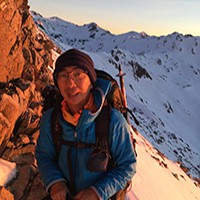 | Yan Zhang CREW Dear all, thank you so much for reading this interview and your warm words, and thanks Yvette to give me this opportunity. |
 | Ralf Stelander FOUNDER Your photography is really excellent Yan, thanks for sharing your story! |
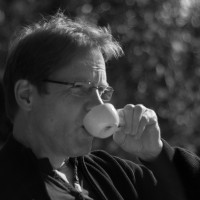 | Knut Sander PRO Stimulating, inspiring, motivating ... Thank both you for that interview and thank you Yvette for your selection ;-) |
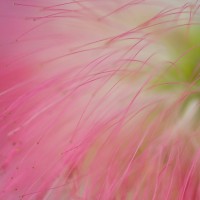 | Evan Oz CREW Yan Zhang's photographs are not only breathtakingly beautiful, they are an inspiration to any aspiring landscape photographer, and also connect the viewer to locales many of us will never otherwise see. Fine article and interview Yan and Yvette. |
 | Yvette Depaepe CREW Thanks for your appreciation, Evan! All credits for Yan, of course... Cheers, Yvette |
 | Mei Xu PRO Beautiful works! Congratulations! |
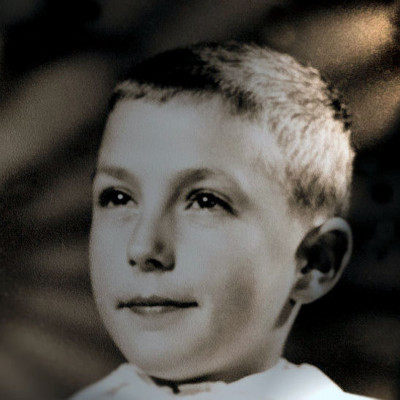 | Thierry Dufour PRO Wonderful photos of this talented photographer, thank Yvette for this magnificent interview !!! |
 | Yvette Depaepe CREW ;-) Thank you Thierry. Glad to have this interview with a great artist like Yan. |
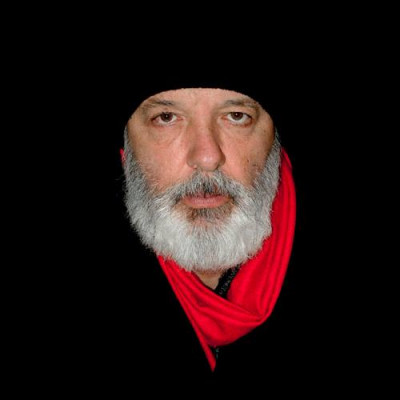 | Massimo Della Latta Splendid |
 | Yan Zhang CREW Thanks very much Yvette! |
 | Yvette Depaepe CREW My pleasure, Yan! You deserve to be in the spotlights as outstanding photographer but for me and the readers of the Magazine as Editor, my friend. Enjoy it and have a great weekend! |
 | Yvette Depaepe CREW Interesting interview and wonderful work, Yan. It was a pleasure to interview you! Cheers, Yvette |